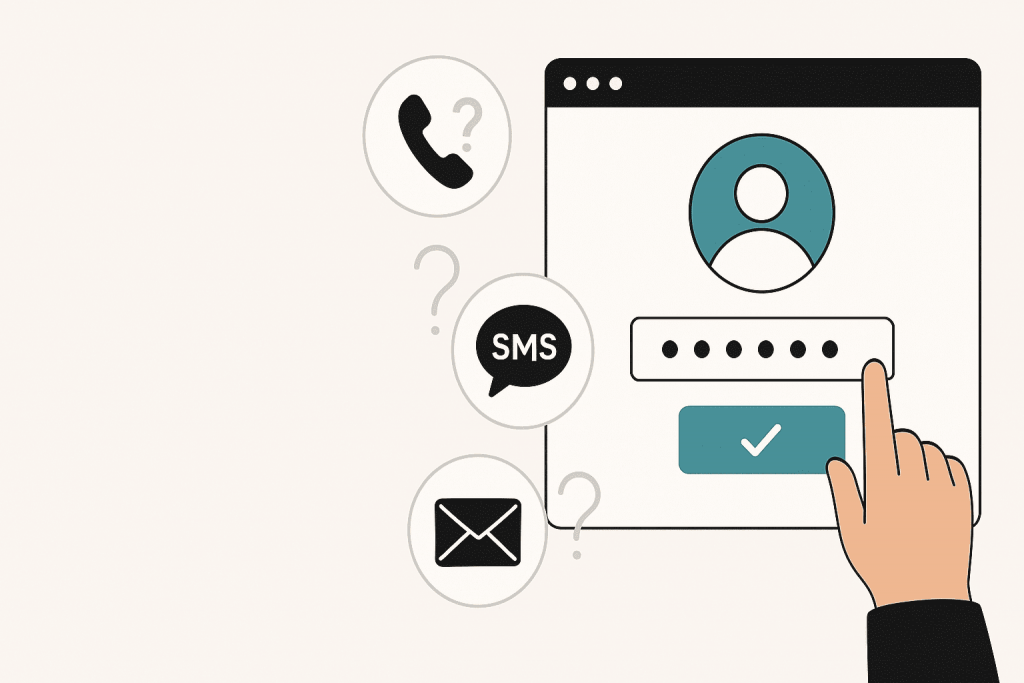
In today’s digital world, user security and protection of personal data have become critically important. One of the fundamental steps in safeguarding users is verification — confirming that you’re dealing with a real person, not a bot or a fraudster. The way you implement this process directly impacts both the security and usability of your website.
In this article, we’ll explore the three most popular verification methods — phone calls, SMS, and email — discussing their advantages, drawbacks, and suitable use cases.
Why is Verification Important?
Verification is more than just a formality. It helps to:
- Prevent fake registrations
- Protect access to personal accounts
- Reduce the risk of fraud
- Increase user trust in your platform
It’s especially crucial for websites that handle personal or payment data — online stores, delivery services, banks, CRM systems, hosting providers, and more.
Nowadays, verification can be carried out in several ways: via phone call, SMS, or email. Let’s take a closer look at each method.
Method 1. Verification via Phone Call
How it works:
The user enters their phone number and receives an incoming call. During the call, they either hear an automatic voice message with a verification code or the system registers the answered call to confirm the number.
Advantages:
- High reliability: harder to spoof than SMS
- Does not require a smartphone — suitable for basic phones
- Convenient for visually impaired users (thanks to voice prompts)
Disadvantages:
- Requires answering a call — inconvenient in noisy environments or during meetings
- More expensive than other methods
- May cause distrust if the user is not expecting a call
Best used for:
Services with high-security requirements, financial transactions, or when 100% confirmation is necessary.
Method 2. Verification via SMS
How it works:
SMS verification is the most common option. The user receives a short text message containing a code, which they must enter on the website.
Advantages:
- Fast and convenient
- Widely supported by mobile operators worldwide
- Easily automated and integrated via API
Disadvantages:
- SMS may not be delivered or may arrive with a delay
- Messages can be intercepted on compromised devices
- Requires mobile connectivity — won’t work on tablets without a SIM card
Best used for:
Standard verification during registration, login, or password reset.
Method 3. Verification via Email
How it works:
An email with a verification link or code is sent to the provided address. The user must either click the link or enter the code on the website.
Advantages:
- Nearly free to implement
- Convenient — most users have email access on their smartphones
- Works without mobile network access
Disadvantages:
- Risk of the email being marked as spam
- Can be slower — the user has to check their inbox
- Users may use temporary email addresses to bypass verification
Best used for:
Account registration confirmation, email address validation, or account activation.
Summary table: сomparing all methods by 4 criteria
| Method | Reliability | Convenience | Cost | Risks |
|---|---|---|---|---|
| Phone Call | High | Medium | High | Missed or unanswered calls |
| SMS | Medium | High | Medium | Interception, delivery delays |
| Medium | High | Low | Spam folder, temporary email usage |
How to Choose the Right Verification Method?
The best choice depends on the specifics of your project:
- If your site processes payment or financial data — consider combining SMS or phone calls with email verification.
- If your goal is simply to confirm that the user is real — email or SMS is usually sufficient.
- If maximum security is required — implement two-factor authentication (2FA) using SMS or phone call as one method and a password or email as the second.
Technical Implementation
You can implement verification on your site using:
- Third-party services (e.g., Twilio, Nexmo, SendGrid)
- Custom solutions via mobile operator or email server APIs
- Integration through CMS or frameworks (e.g., Laravel, WordPress, Django)
Security First: Verification is Just One Step
Don’t forget that verification is only one part of the security chain. It’s also essential to:
- Use SSL certificates
- Protect your databases
- Keep your system and CMS up to date
- Regularly scan your server for malware (see our article on VPS malware scanning)
Reliable Hosting is the Foundation of Security
And finally, remember that secure user verification is impossible without a stable hosting platform. That’s why at RX-NAME, we offer VPS hosting that provides:
- Flexible security settings
- Full root access for total control
- Support for modern protocols and verification systems
- 24/7 technical support
Ordering VPS from RX-NAME is a step toward a safer and more reliable website.
To sum up: choosing the right verification method is a balance between security, convenience, and cost. In most cases, the best option is to combine multiple methods — this way, you can provide both safety and comfort for your users.
However, no matter which method you choose, it’s crucial that your hosting supports modern technology and remains dependable.
Stay safe and protect your data!

Leave a Reply